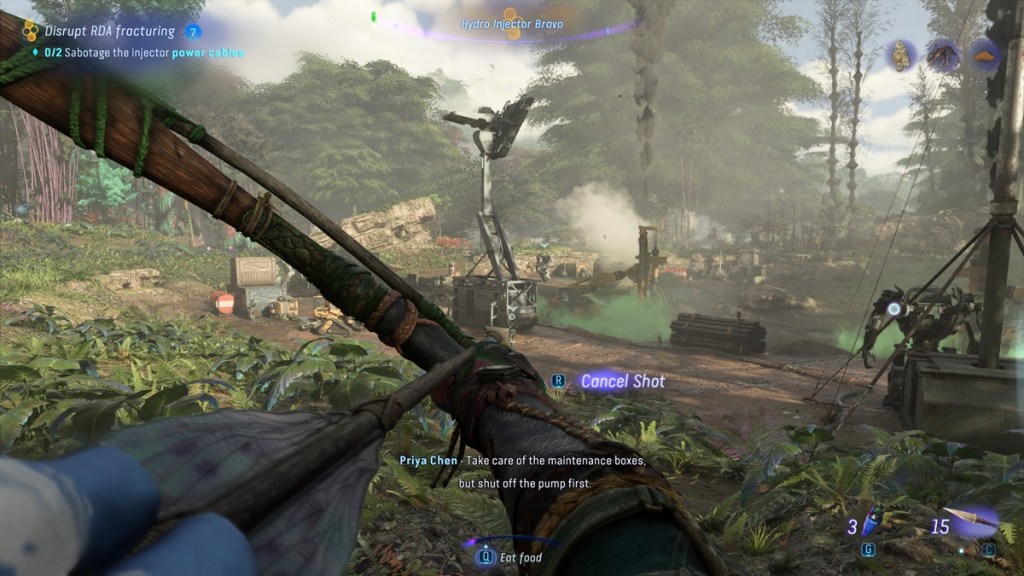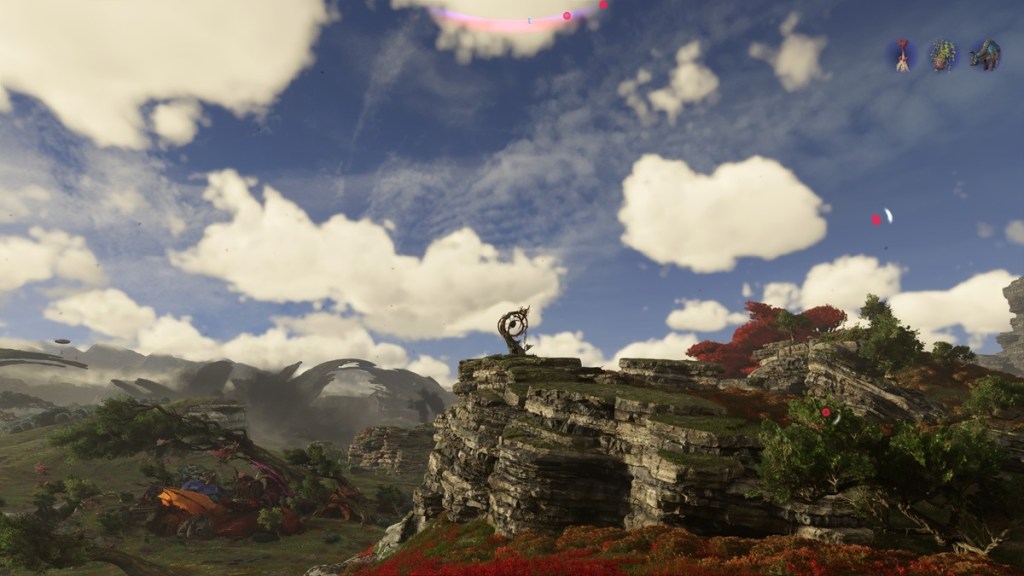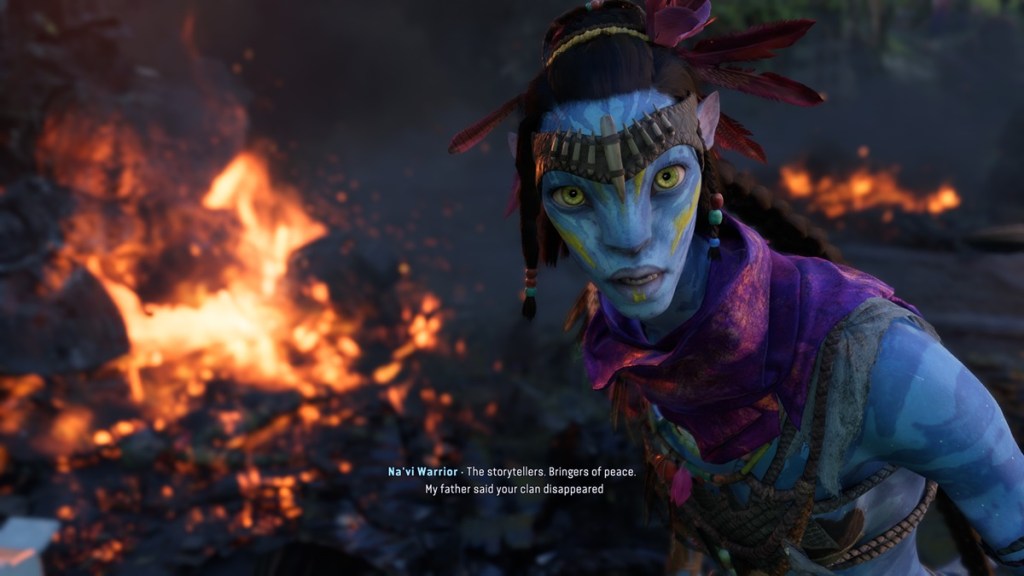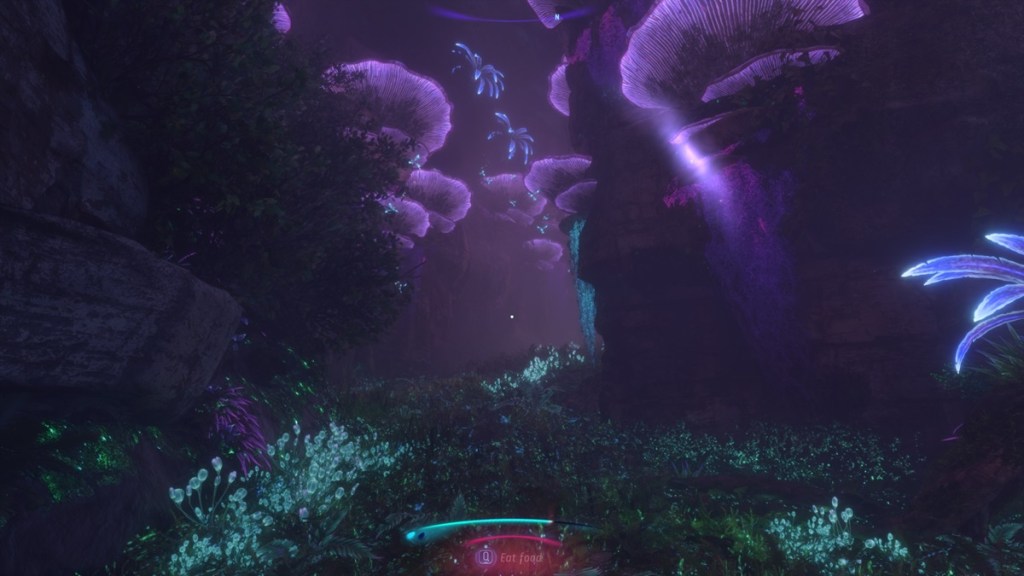When Ubisoft revealed the first-look video for Avatar: Frontiers of Pandora a couple of years ago, I thought, “Oh cool, an Avatar-themed Far Cry game!” I generally have a good time with Far Cry, but have been a bit burnt out on the gameplay loop recently. Turns out I was wrong.
While Avatar: Frontiers of Pandora does indeed have some overlapping elements with the Far Cry series, it’s very much its own game. If anything, it takes those elements and pushes them further, while molding them to fit within the world of James Cameron’s Avatar.
For fans of Avatar in general, Frontiers of Pandora is just what you’re looking for. Even if you’re not, the beautiful world that Massive Entertainment has created mixed with its tight combat system pushes the staple open-world fun of Ubisoft to the next level. Sure, it’s got some of the same stuff we’ve done before: clearing out enemy bases, hunting animals for materials, and more sidequests and collectibles than you can imagine. But even still, it does so with its own unique additions that make Avatar: Frontiers of Pandora its own.
Avatar: Frontiers of Pandora (PC [reviewed], PS5, Xbox Series X|S)
Developer: Massive Entertainment
Publisher: Ubisoft
Released: December 7, 2023
MSRP: $69.99

Yo, listen up here’s a story
The story starts with you creating your own young Na’vi, who is essentially part of what the RDA (humans) call The Ambassador Program. It’s marketed as a program to help bridge the game between Na’vi and Human relations, but of course that’s not the case. Turns out, your tribe, the Sarentu, mysteriously disappeared and you are the last remaining member. The Sarentu were a very respected and prestigious tribe on Pandora, so their disappearance is obviously worrisome to the Na’vi.
By the end of the brief introduction sequence, you are older and much wiser about the real motives of The Ambassador Program, which certainly aren’t favorable to the Na’vi. A resistance group of humans and Na’vi breaks you out shortly after Jake Sully rallies the tribes against the RDA in the movie, which is where Avatar: Frontiers of Pandora really begins. Even though Jake Sully and his actions are referenced, from here on out Frontiers of Pandora is its own story set on the Western Frontier continent of Pandora.
At its core, the overarching narrative is mostly what you’d expect; the RDA is bad and up to no good, and the resistance is trying to put a stop to it. They’re up to some more nefarious things on Pandora than we’ve seen in the movies, too. But the story also delves into the Sarentu as you learn more about their heritage and what happened to them. As you progress, you will rally other tribes to join the resistance in fighting back against the RDA, with each one sharing more information with you about the Sarentu and their importance to the world. The story is solid, but made even better by the incredibly detailed and living world of Pandora all around you.

About a little guy that lives in a blue world
Massive Entertainment really put a lot of detail into creating its version of Pandora. The Western Frontier the player can explore is split into three regions: The Kinglor Forest, The Upper Plains, and The Clouded Forest. At the start, only the Kinglor Forest is available to you, and you unlock the other two areas by progressing through the main story.
The Kinglor Forest is a lush and sprawling rainforest resting under a floating mountain formation, one of the iconic biomes from Avatar. To say the world is beautiful would be an understatement. If you remember the surreal feeling of the forest lightning up at night when seeing Avatar for the first time, be prepared to relive it.
The world is also massive, both in scale and literal size. Colossal trees tower above as you run swiftly through the forest. Some of the most memorable moments I have with Avatar: Frontiers of Pandora are just running through the rainforest while scaling monumental tree roots and mushrooms, all while the chirps and calls of creatures echo around me. It feels like an actual living world, which is a big part of what makes Avatar and more specifically Pandora so special.
Also, everything opens up very early, allowing you to explore the world with freedom. You can tackle a plethora of sidequests as well as hunt down a ton of collectibles. There’s a 3D world map that marks the location of a collectible, quest hub, or important location. Once you’ve acquired the collectible or visited the location, it changes to a green blip indicating you have obtained what was there. I’m usually not a fan of collectibles, but I had a lot of fun seeking them out. Bellsprigs and Tarsyu Saplings, the two primary collectibles, also give you rewards for finding them. Each Bellsprig you touch grants you a permanent max health boost, while each Tarsyu Sapling gives you a skill point. It’s nice to have collectibles that are not only fun to explore and hunt down, but also worthwhile in terms of rewards for doing so.
Very early on, the Aranahe tribe in Kinglor Forest tasks you with bonding with and acquiring your own Ikran. For those unfamiliar, these are the flying creatures that Na’vi can bond with to mount and take to the skies. To do so, you must ascend to the top of an Ikran Rookery and tame one of the creatures. The journey to the top is a very aesthetically pleasing experience, with a bit of adventure, puzzle-solving, and platforming all thrown together. The outstanding music—which, by the way, Avatar: Frontiers of Pandora‘s entire soundtrack is incredible—only enhances the journey even more. It’s a very cool experience and ends with you being able to fly across the Western Frontier of Pandora.

And all day and all night and everything he sees is just blue
For how authentic the world of Pandora feels, the same can be said about playing as a Na’vi. For starters, you are taller than a human. It may not seem like much, but with the first-person camera towering over humans, it’s a noticeable difference right away. You can also hold down the jump button to extend how high and far you can jump. Once again, this may seem like a small thing, but it really makes you feel like a Na’vi as you’re jumping across fallen trees and scaling cliff sides.
Then, there’s the combat. It’s a very tight and realistic feeling. Your primary weapon of choice is going to be the bow, which works just how you imagine it would. Hold down the fire button to pull the arrow back, causing it to go further. It’s always fun when you perfectly line up a shot—because of course, there is bullet, err, arrow drop—and hit your enemy. You’ll also have access to a couple more Na’vi weapons like the Hunting Bow, which is essentially a longer-range bow, and the Staff Sling, which allows you to hurl explosives at great distance.
There are also a couple of RDA weapons. Each weapon seems to have its own strengths and weaknesses. For example, the bow is a one-shot kill on your basic human enemy. However, when going up against an RDA AMP mech suit, you’re going to use their own weapons against them: the Assault Rifle or Shotgun. While it may seem like the Na’vi weapons are weaker, they typically are not. You can also craft additional ammo for them on the fly, whereas ammo for the RDA weapons has to be looted, from containers or dead RDA enemies.
A major part of Avatar: Frontiers of Pandora is the crafting. You’ll collect materials throughout all of Pandora, be it mushrooms growing on the forest floor, honey from beehives hanging from the trees, or even hides and teeth from animals you will hunt. You can use these materials to craft various recipes and designs you’ll unlock by progressing through the story, increasing your favor with the various clans, and completing specific side quests. Some of the recipes are for better types of food which, when consumed, give you buffs. Primarily though, you will be crafting armor and weapon upgrades and mods.
You also have the ability to use your Na’vi Senses. This puts a focused central point of your vision that highlights pretty much anything of note: collectibles, gatherable materials, animals, and even enemies. It’s essentially Eagle Vision from Assassin’s Creed. I like the system, but also wish it was a bit more expanded to maybe grant you the increased senses for your whole vision, not just the focused center point. Then again, maybe that would make it too strong.

Like him inside and outside
As I said, there are some definite similarities to Far Cry here. You’ll raid RDA outposts and bases, as well as shut down their mining and drilling operations. One of the cooler aspects is doing so eradicates the pollution in that area. A large portion of the map in the Western Frontier starts off orangeish-brown with pollution from nearby RDA installations. But each one you take out allows life to flourish in the area. This isn’t just for looks, though. You’ll also gain access to new sidequests, fast travel points, collectibles, and loot by doing so.
I’ve grown tired of the whole “liberate enemy outposts” system, but can say I genuinely sought them out and enjoyed doing so in Avatar: Frontiers of Pandora. As I said, they took some of the core systems and added enough nuance from the Avatar IP to make it different and fun.
There’s also a skill system, with five different paths you can invest your skill points into. Skill points are obtained by hunting down Tarsyu Saplings and completing the main story and side quests. There’s quite a bit of diversity in the skills, which is nice. Focusing on the Survivor Skill Tree will give you more health and increase resistance against certain types of damage. The Maker Skill Tree, however, increases the quality of materials you obtain, and improves the quality of equipment you craft.
Each skill also has its own Apex Skill that you unlock by completing a specific challenge and unlocking every other skill in that tree. All of the five Apex Skills are pretty big, so they are definitely worth going for. I personally found some skills more worthwhile than others, but with all of the Apex Skills being so useful, I found myself wanting to progress through each tree eventually. For example, the Apex Skill for the Maker Skill Tree makes all of your crafted gear and weapons more powerful. I beelined this Apex Skill and am glad I did so, because the now-increased damage my weapons deal is a real game-changer.

I’m blue
Unfortunately, I did encounter a few issues that at least affected my playthrough somewhat along the way. I had a pretty well-optimized adventure while playing through the Kinglor Forest area. However, once I reached the second and third areas, I saw some noticeable FPS drops. The dense forest didn’t have many issues, but for some reason, the open plains were a bit more trouble.
I’m also not a fan of the Combat Strength system in Avatar: Frontiers of Pandora. I like that there’s no actual experience grinding to level up. Your Combat Strength is calculated based on the gear you have equipped, including armor and weapons and their attachments. You can also increase your Combat Strength by selecting certain skills on the skill tree that boost damage or health.
But the main issue here is that the number acts as sort of a hard wall when fighting enemies. For example, if your Combat Strength is 7, almost 8, and you are fighting an enemy that has a strength of 8, you’re not going to have a good time. The enemy takes reduced damage while also dealing a lot more damage to you. However, equipping a very minor upgrade that will push your score up to 8 suddenly makes the enemy much easier. In a way, it can feel as though it trivializes the stats on equipment because, at the end of the day, you just want to strive for a higher Combat Strength than your opponent.
Finally, as much as I like the 3D world map, in some cases, it’s not very practical from a gameplay perspective. I’d often be at the spot on my map indicating there was a Bellsprig or Tarsyu Sapling—both collectibles—which was literally visible on the map. However, the actual location of the collectible was in a nearby cave.

Da be dee da ba di
Avatar: Frontiers of Pandora does Avatar justice. Massive Entertainment has created a truly immersive and polished Pandora, that quite frankly far exceeded my expectations. Massive managed to create the same feeling of awe that I experienced when the Avatar movie was released almost 14 years ago. Running through the lush forests of Pandora with its incredibly grandiose overgrown flora while the sounds of creatures simply living all around me creates such an authentic rendition of life on Pandora.
If you walked away from Avatar wishing a world like Pandora actually existed out there, here you go. This is that world. Seeing Pandora is one thing, but being able to scale its massive treetops, soar high above its floating mountains on an Ikran, and traverse its wide open plains on the back of a Direhorse is really something special. This is the best version of Avatar yet.
[This review is based on a retail build of the game provided by the publisher.]







